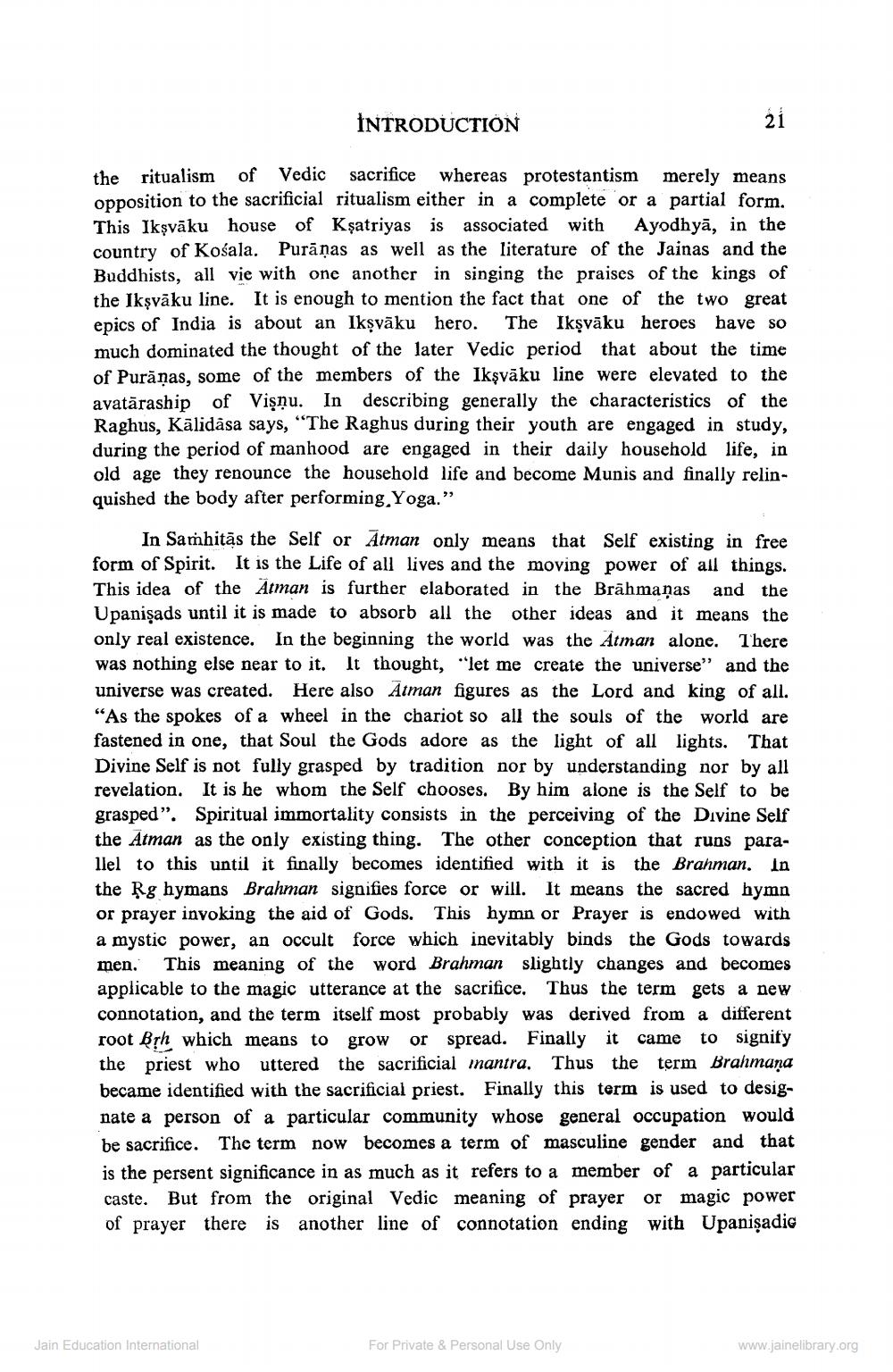________________
INTRODUCTION
the ritualism of Vedic sacrifice whereas protestantism merely means opposition to the sacrificial ritualism either in a complete or a partial form. This Ikşvāku house of Ksatriyas is associated with Ayodhyā, in the country of Kosala. Purāņas as well as the literature of the Jainas and the Buddhists, all vie with one another in singing the praises of the kings of the Ikşvāku line. It is enough to mention the fact that one of the two great epics of India is about an Ikşvāku hero. The Ikşvāku heroes have so much dominated the thought of the later Vedic period that about the time of Purānas, some of the members of the Ikşvāku line were elevated to the avatāraship of Vişņu. In describing generally the characteristics of the Raghus, Kālidāsa says, “The Raghus during their youth are engaged in study, during the period of manhood are engaged in their daily household life, in old age they renounce the household life and become Munis and finally relinquished the body after performing, Yoga."
In Samhitās the Self or Atman only means that Self existing in free form of Spirit. It is the Life of all lives and the moving power of all things. This idea of the Atman is further elaborated in the Brāhmaṇas and the Upanişads until it is made to absorb all the other ideas and it means the only real existence. In the beginning the world was the Atman alone. There was nothing else near to it. It thought, "let me create the universe" and the universe was created. Here also Ātman figures as the Lord and king of all. "As the spokes of a wheel in the chariot so all the souls of the world are fastened in one, that Soul the Gods adore as the light of all lights. That Divine Self is not fully grasped by tradition nor by understanding nor by all revelation. It is he whom the Self chooses. By him alone is the Self to be grasped". Spiritual immortality consists in the perceiving of the Divine Self the Atman as the only existing thing. The other conception that runs parallel to this until it finally becomes identified with it is the Brahman. In the Rg hymans Brahman signifies force or will. It means the sacred hymn or prayer invoking the aid of Gods. This hymn or Prayer is endowed with a mystic power, an occult force which inevitably binds the Gods towards men. This meaning of the word Brahman slightly changes and becomes applicable to the magic utterance at the sacrifice. Thus the term gets a new connotation, and the term itself most probably was derived from a different root Rph which means to grow or spread. Finally it came to signify the priest who uttered the sacrificial mantra. Thus the term Brahmana became identified with the sacrificial priest. Finally this term is used to designate a person of a particular community whose general occupation would be sacrifice. The term now becomes a term of masculine gender and that is the persent significance in as much as it refers to a member of a particular caste. But from the original Vedic meaning of prayer or magic power of prayer there is another line of connotation ending with Upanişadic
Jain Education International
For Private & Personal Use Only
www.jainelibrary.org




